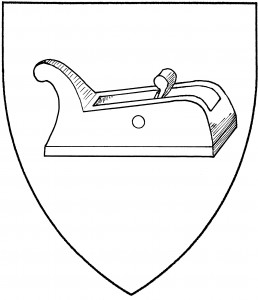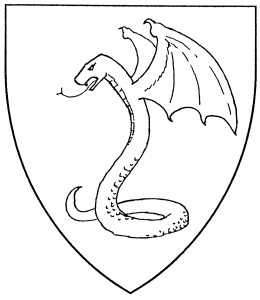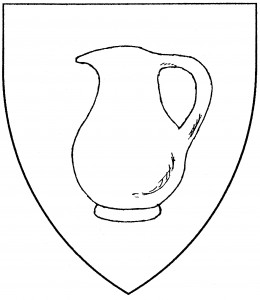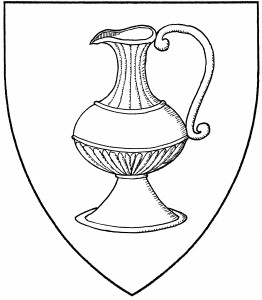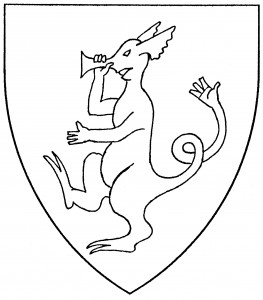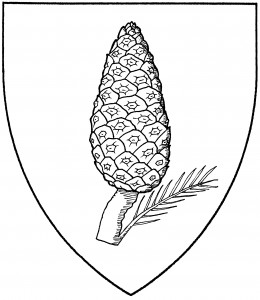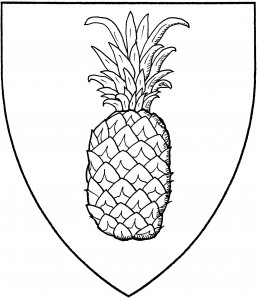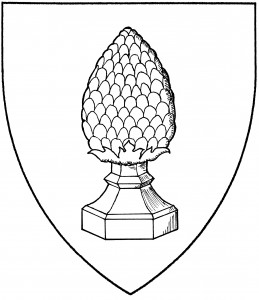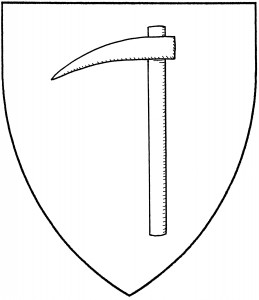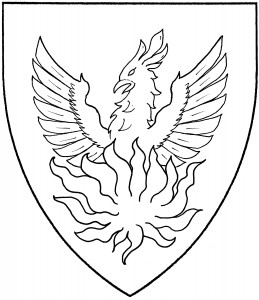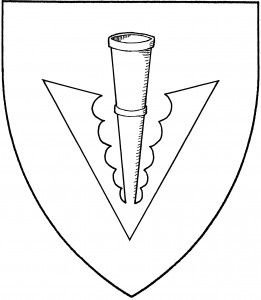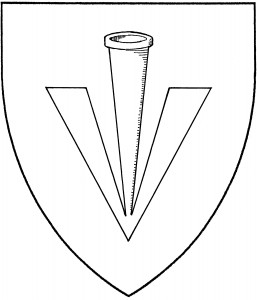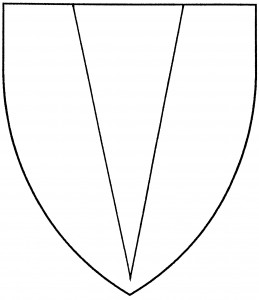
Pile (Period)
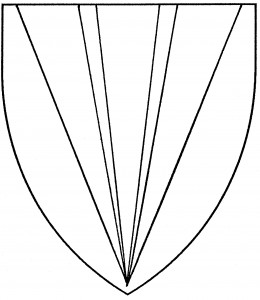
Three piles in point (Period)
The pile is an heraldic ordinary consisting of a triangle issuant from the chief of the shield to the base point, or almost reaching it. It seems to have derived from attempts to fit a pale onto a heater-shaped shield, with the bottom pinched together rather than cut off.
The medieval pile is about one-third the shield’s width at top, and is throughout to the base point; the Tudor pile is wider and squatter, and does not reach all the way throughout. Either form is found in Society heraldry, though the medieval form is encouraged; no heraldic difference is counted between the two, or between throughout vs. not.
Multiple piles are common in mundane and Society heraldry; no diminutives of the pile are recognized. Multiple piles with their points conjoined may be blazoned “piles in point”; this was the medieval default for multiple piles, due to their derivation from pinched pallets. If multiple piles are palewise, instead of in point, this should be explicitly blazoned.
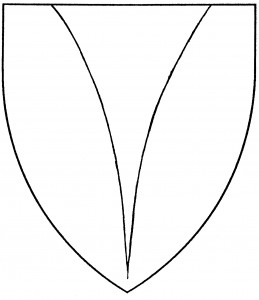
Pile ployé (Accepted)
Piles sometimes issue from other points besides the chief: there are examples in late-period armory of piles “inverted” or issuant from base, piles issuant from dexter, and “bendwise” (issuant from dexter chief). In Society heraldry there have even been piles “in saltire”.
The pile is subject to the normal lines of division, including cotising and voiding; the “pile ployé”, with concave arched lines, is unique to Society heraldry. For related charges, see chapé, chaussé, gyron, tooth (wolves’).
The King of Artemisia bears: Sable, on a pile between two griffins combattant, each maintaining an arrow inverted Or, an ancient crown within a laurel wreath sable.
The Baron of Ruantallan bears: Azure, a pile argent, overall a laurel wreath counterchanged.
Adelindis filia Gotefridi bears: Gules, a pile Or.
Muirenn ingen Nath-í bears: Sable, three piles in point Or.
Masae Lorane bears: Or, five piles inverted in point throughout azure.
Eleanor Valentina Beota bears: Azure, on a pile ployé argent, a hummingbird hovering vert.
